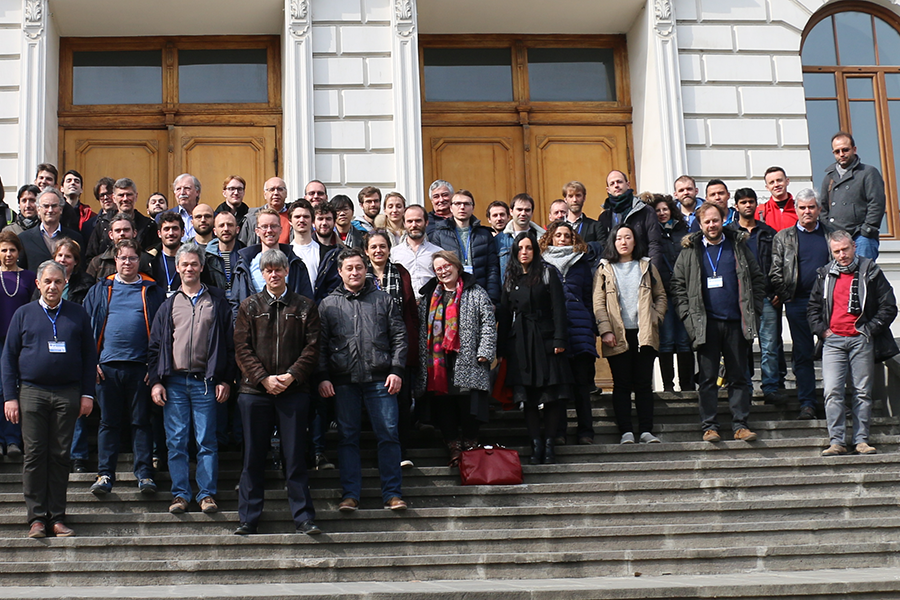Yachay Tech is part of KM3NeT

The underwater telescope of neutrinos will be a tool for research in the fields of Physics, Biology, and Geology.
March 20, 2019
Carl Sagan once said: The Universe is not required to be in perfect harmony with human ambition. One of the clearest examples of this statement is the complexity of studying one of the Universe’s most abundant and intriguing particles: the neutrino. Cosmic neutrinos (those whose sources are not terrestrial) go through the earth constantly, travel at very high speeds and rarely interact with matter. These elusive particles promise to be the key to understand the Universe a little better. This is why, for several years, ingenious and colossal experiments have been designed, constructed, and put into operation to detect them. One of the most recent and promising experiments (which belongs to the fourth generation) is KM3NeT, a one-kilometer-cubic volume detector that is being installed at the bottom of the Mediterranean Sea. At the beginning of 2019, Yachay Tech University became part of the member institutions, becoming the first University in Latin American history to take part in this type of infrastructure.
The idea of placing a neutrino-detecting “telescope” at the seabed is not new. Before KM3NeT, three generations of detectors contributed to the technical and scientific viability of this type of facility. ANTARES, one of the most important ones, was the one who finally set a precedent to perform “Neutrino Astronomy” with an installation located at the seabed. The fact of locating an observatory at great depths in the sea is mainly to guarantee maximum guarding against other types of signals that may make it difficult to identify the origin of the neutrino in which they are interested. This is because, in order to detect them, this type of experiment records a type of light called Cherenkov radiation. This occurs when one of them hits the surroundings of the detector or the detector itself and generates a new particle that leaves that kind of “fingerprint” when crossing the detection means at very high speeds. The seabed is one of the perfect locations for this type of detector because it is dark and provides the necessary conditions for such detection.
KM3NeT is planned in such a way that it is built and tested by phases. Currently, there are several detection lines installed for the first phase of the project; the affiliated institutions can access a huge database. Section #5 of the Technical Design Report had the participation of Harold Yepes Ramírez, PhD., faculty of the School of Physical Sciences and Nanotechnology of Yachay Tech. Harold, who previously collaborated with ANTARES, prepared the application and obtained the membership for Yachay Tech by presenting the research potential of the institution before the KM3NeT Institutional Board.
In its final configuration, KM3NeT will consist of 345 detection lines with 18 digital optical modules (basically glass spheres resistant to high pressures) each of them with 31 photo multiplier tubes by module (devices that convert light into electrical signals). In addition to the detection lines, other systems such as electronics and communications modules, power supplies, calibration systems, mechanical supports, among others, are coupled. As a whole, the detection lines are being distributed in two sites known as ARCA and ORCA, in Italy and France respectively, with different distributions, purposes, and specific programs.
The capabilities of KM3NeT to contributing to research in other fields are huge due to the technological challenge and the magnitude of the project. In this sense, Harold insists that the collaboration between KM3NeT and Yachay Tech University is also beneficial for several research areas of the University, mainly dedicated to earth sciences: biology and geology.
Yachay Tech is the first Latin American University in history to access a collaboration with an underwater neutrino detector. The next step is to start the development of specific projects in different areas that can benefit from the data that KM3NeT will deliver. Yachay Tech and its experts will contribute to doing research, engineering, and participating in real-time remote monitoring and open sea operations of KM3NeT.
KM3NeT is an experiment of about 250 million Euros, that results from a joint effort between several countries of the European Union, Africa, and Australia. For Harold, this collaboration means a lot and represents a mutual benefit. “Sometimes these types of experiments have the resources, but they require work force. We still lack the economic muscle, but we have people with the motivation, preparation, desire, and ability to face these challenges and do important things in experiments like this” he comments.